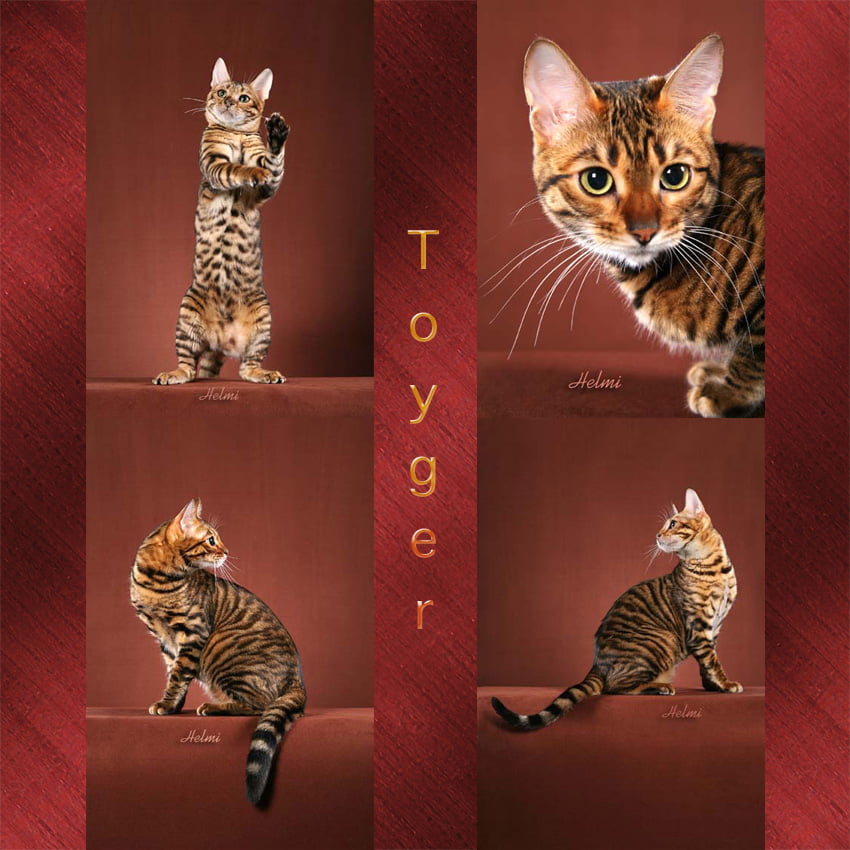The word "agouti" is rather confusing. It refers to a gene which creates a certain type of cat coat namely the tabby cat coat. It is signified by the symbol A. It is dominant. The recessive is non-agouti indicated by the symbol a. Dr Morris describes the word "agouti" as the name given to a coat in which each individual hair is marked with bands of black, brown and yellow. He is referring to the tabby coat in which each individual hair strand is banded, essentially striped. The striping is created by two types of colour pigment, eumelanin (black/brown pigment) and phaeomelanin (yellow/red pigment).
The toyger, a relatively rare cat breed has a striped tabby coat created by the agouti gene:
 |
| The glamorous Toyger has a tabby coat. Photos by Helmi Flick. Collage by Michael. |
Tabby coats are marked with dark areas of swirling fur or stripes or spots. There is another version which is the ticked tabby, seen on the Abyssinian cat and also in another species of animal a large South American rodent called an agouti; hence the name. The Abyssinian cat is an all-agouti cat.
The agouti gene is very common and "highly conserved among all mammalian species". It produces a molecule called the "agouti protein". As the hair shaft grows within its hair follicle in the skin, eumelanin is produced by cells within the hair follicle called melanocytes. This pigment is deposited into the growing hair. As the amount of agouti protein increases within the melanocytes, eumelanin production is inhibited which results in a shift to production of phaeomelanin which is then deposited in the hair shaft to create this sandwich effect. In the ticked coat the band at the top is black with yellow at the base.
Another well-known animal that happens to be a cat but this time a wild cat species which has a very well-defined and strong ticked coat is the jaguarundi. The cat with the most pronounced ticked cat coat:
In short, when you think of the word agouti you should think of the tabby cat coat in all its varieties.
Note: the quote is from Robinson's Genetics.




No comments:
Post a Comment
Your comments are always welcome.